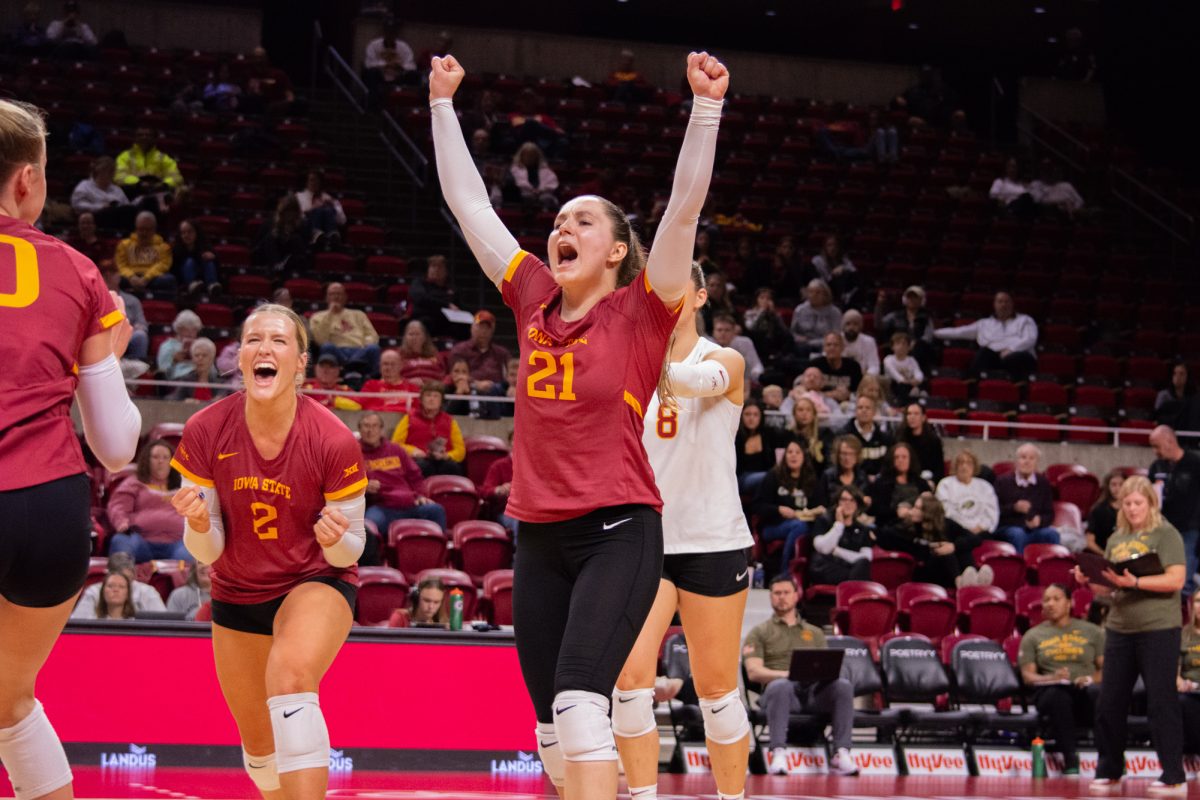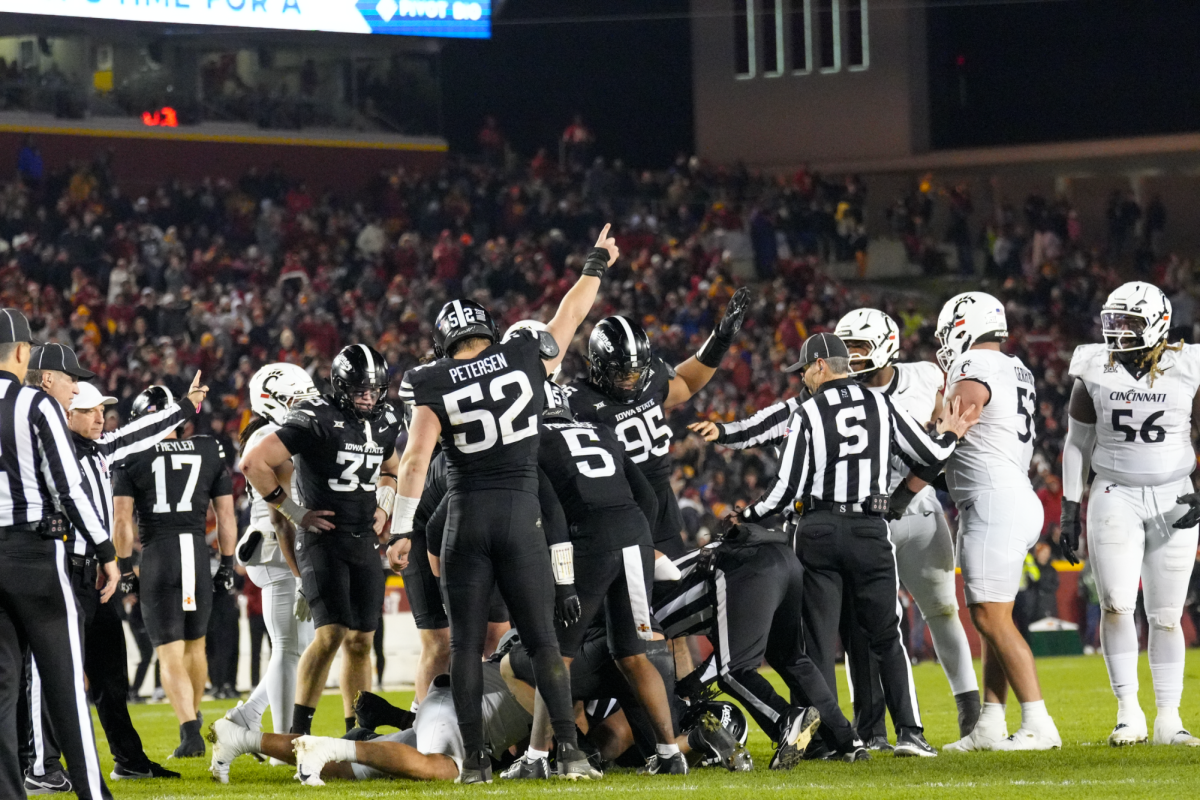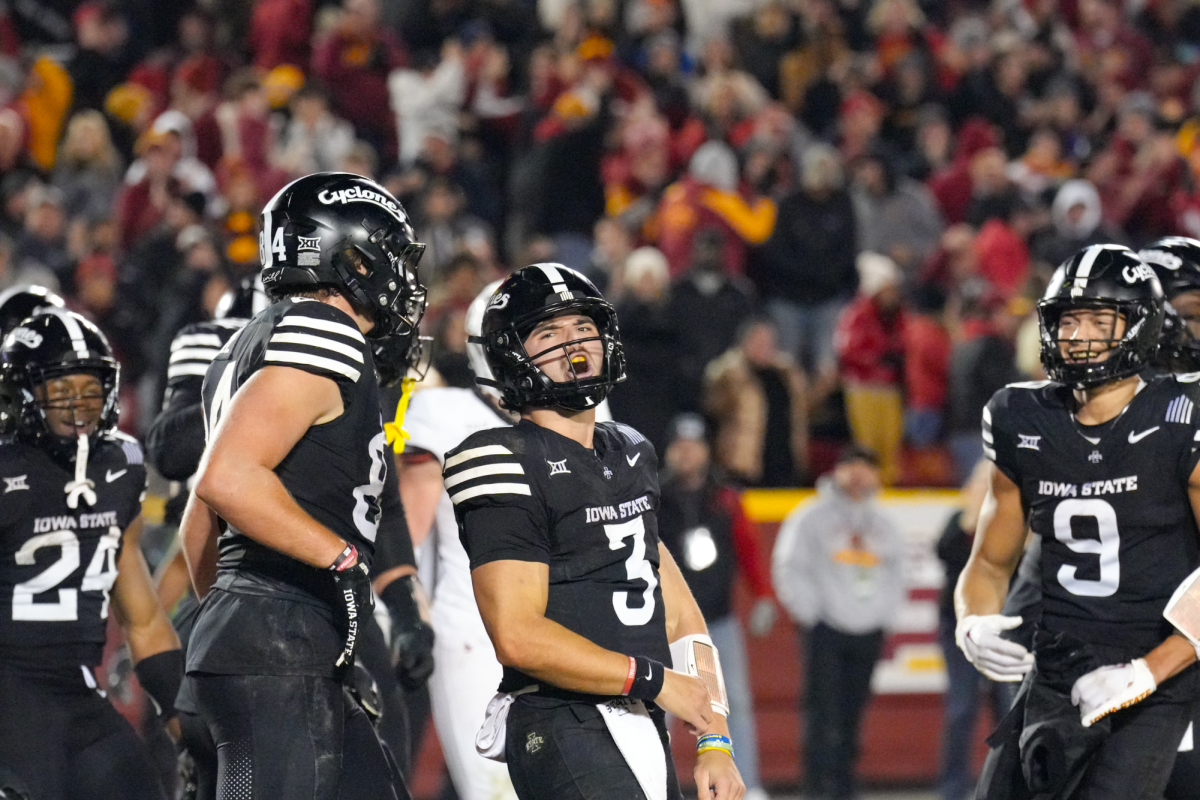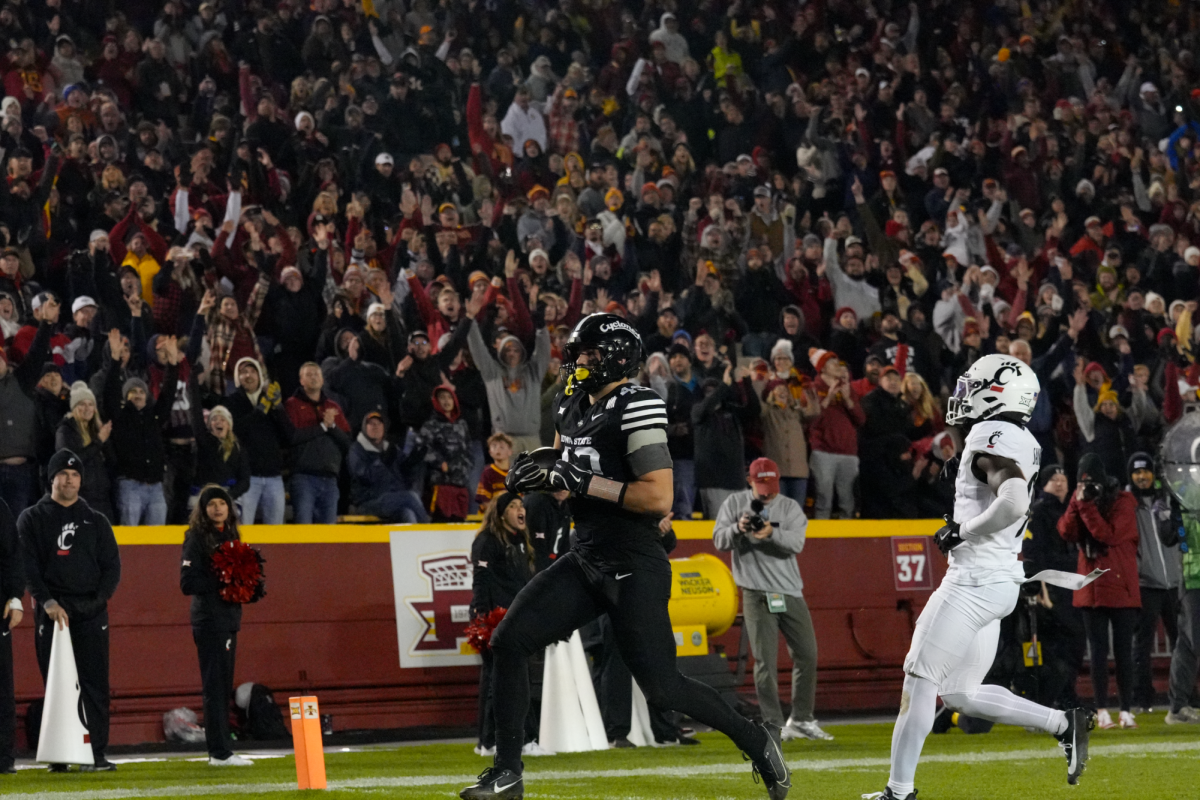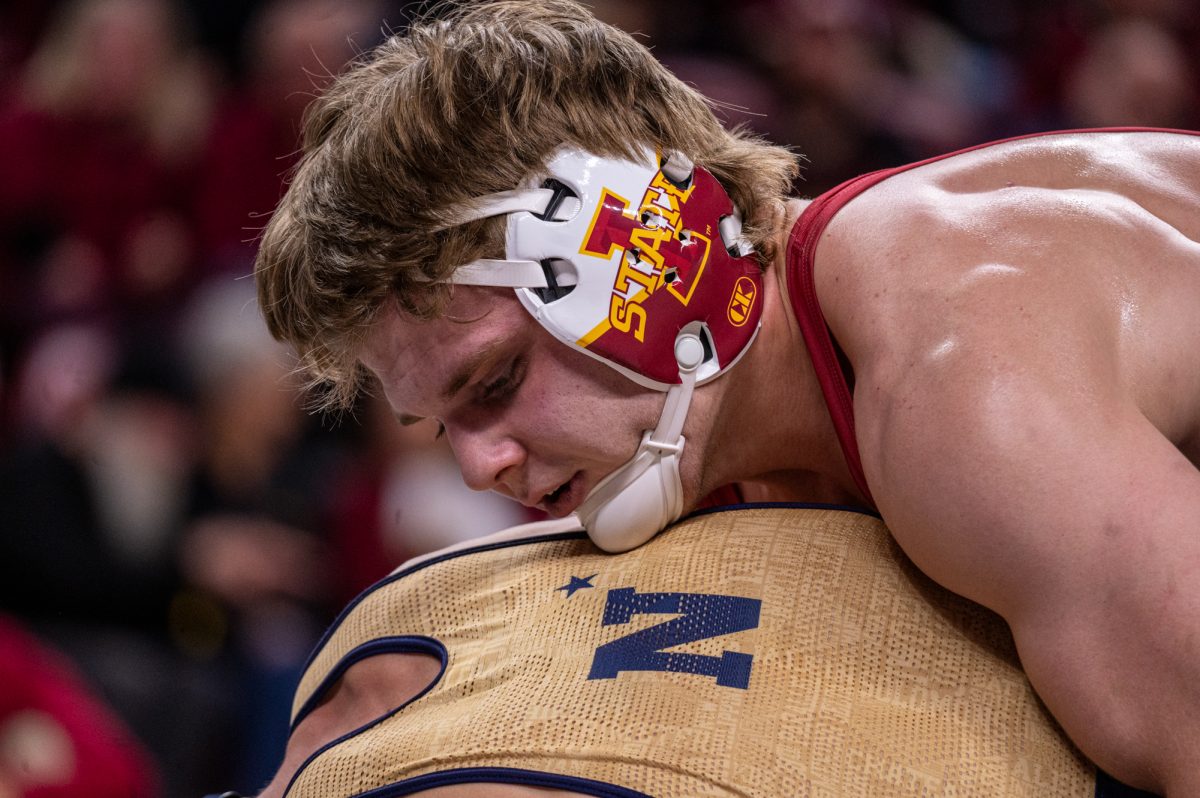Starting over
September 11, 2005
Boone residents Jack Rusnak, 56, and John Chidester, 68, have been driving semis together for 30 years, and it goes without saying the two are close friends. You can tell by the way they finish each other’s sentences and order the same thing for dinner. “Unsweet” iced tea, double angus steak, french fries with gravy and apple pie.
They both love truck driving. Rusnak and Chidester met while driving for Fareway’s distribution center in Boone.
“People always ask me, ‘Don’t you get tired of driving that truck?” Rusnak said. “And I don’t. I get to meet new people all the time, go places all over the country and no boss.”
The two bowl together on Saturday nights in Ames, which is where they got their first glimpses of what was happening to the Gulf Coast.
“We were having a beer at the bowling alley together, watching the Iowa game,” Rusnak said. “And they kept flashing blips of Hurricane Katrina. We had to do something.”
Chidester owns his own truck, even though he has been retired from Fareway for a few years. After he got word that Fareway would be making donations to hurricane victims, Chidester said he knew just what they could do to help.
“I says to them, ‘You donate, I’ll haul it,” Chidester said.
The Trinity Methodist Church in Gulfport, Miss. regularly serves meals to homeless people in the area. Before the last winds of Katrina died down, long rows of tables were set up in the church’s small gym to accept and sort donations and seat hurricane survivors looking for a warm meal.
At 9 a.m. Friday outside the church, volunteers – many victims themselves – swarmed around semis arriving from Iowa and Jackson, Miss. Lines were formed and the trucks were unloaded and sorted. Bottled water in stacks outside. Shampoo, diapers and first-aid supplies in one corner of the gym. Cases of granola bars, canned goods and frozen hamburger patties in another area of the gym. Coolers were brought out to ice down the water. Paper sacks were filled with an assortment of donated food, and each family was to receive two sacks. A man stood by the door of the gym, instructing people to sanitize their hands and sign in to get food. Each move was quick and methodical. Years of helping the homeless had prepared the church for how the hurricane had now left them – homeless.
“A pediatrician told me, ‘I never thought in a million years I would be standing in a food line,'” said Regina Brown, 37, a Gulfport native and church volunteer.
Fisher said the residents of Gulfport had only received minimal help from FEMA. The agency, mostly concentrating on New Orleans, had only supplied Gulfport with water and ice. The majority of Gulfport’s assistance has been coming from private donors, he said. Points of distribution, which are places trucks go before getting routed to locations throughout the city to drop off aid, are set throughout the city.
Friday, the lunch menu for the church included barbecue and hamburgers from Iowa. A handful of older men work the huge grills outside the church.
For the past few days, Brown said the church has fed approximately 2,000 victims between the hours of 11 a.m. and 2 p.m.
But, Brown said, those hours are fluid.
“If people show up after 2 p.m., we don’t turn them away,” she said.
Before the first truck of the day is completely unloaded outside the church Friday morning, Payton Readman, 41, walks around the gym dabbing her eyes with a tissue. When she finds someone who can stop and listen, she tells them she has just recently been to her home, and is overwhelmed at the sight. She lives nearby with her father Sam, 82. She asks if anyone can help her start to clean up.
“I came down here last year from Texas,” she said, and added in a hushed voice, pointing to her father, “to take care of him.” Outside her brick home, tree limbs, garbage and brush create a carpet over the grass and driveway. A Mickey Mouse lawn ornament stands in her backyard, which she is quick to point out isn’t hers.
Inside the house, furniture and appliances lie on their sides, spilling their contents over the swelled linoleum and carpet. The smell of mildew and black mold is so thick it is almost choking. There is an 8-foot-tall water line on the walls of every room.
Sam said he is familiar with the sight. He has lived in Gulfport almost all of his life. In 1969, Hurricane Camille completely wiped out the first home he shared with his family. Sam is now starting over for the second time. He said he preferred the damage left by Camille.
“I’d rather have it slick than have to worry about sorting through all this,” he said.
After Camille, building codes in the city dictated that homes had to be built 12 feet above sea level. Sam said they thought that would be enough.
“We were surprised in the fact that it got that high,” he said, quietly.
Fisher said this neighborhood did relatively well compared to other areas in Gulfport.
“This is just the tip of the iceberg in devastation,” he said.
Starting over once is enough for Payton, who said her first instinct after the storm was to move back to Texas.
“But he won’t go,” she said, referring to Sam. “All his friends are here. He won’t go.”
Payton’s neighbor, Pamela Stennis, 40, said she is a lucky woman. Stennis grew up in Gulfport and moved to New York City to work for Morgan Stanley.
Stennis was working on the 59th floor of the South Tower of the World Trade Center on Sept. 11, 2001. She said she remembers running for the stairwell when the first plane hit the North Tower.
“I did 59 flights in 17 minutes,” she said.
When the second plane hit her building, she was in the lobby. She said she crouched next to a support beam and crawled out of the building. After 13 years in New York, she returned to Gulfport.
“I moved back here after Sept. 11 for some peace and quiet and tranquility,” she said.
Stennis said she has two homes in Gulfport, which miraculously survived.
“I think I am living out someone else’s nine lives,” she said.
On Friday, Stennis surveyed the area around U.S. Highway 90 in Gulfport. Before Katrina hit, it was the home of historic houses, hotels, restaurants, a veteran’s hospital, a library, a number of churches and recreation spots. This area was the one hardest hit by Katrina in Gulfport.
“I’m just down here slack-jawing,” she said.
Unlike the northern neighborhoods of Gulfport, building structures were reduced to piles of rubble and a foundation. A floating casino, which used to be in the water, now sits in the middle of the highway. Clothing hangs from trees and bushes. The air smells of raw sewage and death. Piles of sand are everywhere. One of the only buildings still structurally intact has the message “You loot, we shoot” spray-painted on the wall.
Gulfport police and U.S. National Guard personnel patrol the entrances to the highway, to keep residents from interfering with clean up and rescue missions.
“Sept. 11 was so concentrated compared to this,” Stennis said.
Shannon McKenna said she can’t believe what has happened to the area. As she rides down the road, she leans out the window and points out what the piles of rubble used to be.
“This was full,” she said. “Everything was here.”
Fisher looked to the ocean and then back to the rubble-filled land.
“You look to the left and see how beautiful it is,” he said. “It’s almost a line between two places, beautiful and ugly.”
Shannon McKenna’s mother, Annette, 46, lives by Bernard Bayou in Gulfport. In her “normal” life, she works as a legal secretary.
“But the sad thing is, the office where I work got destroyed,” Annette said.
Before the storm was in full force, she thought with the city’s building codes the only thing she would have to worry about was wet carpet.
“But then the Bayou came up and flooded everybody. The water kept hitting the door,” she said. “It sounded like you were going out on a boat.”
Annette said she had to leave her home though a window, because all the doors were pressed shut by water. She and her husband David, 53, her son David Jr., his family and two other families drove to the nearby junior high. Her husband is the maintenance supervisor and let the group into the library where they waited out the storm.
“I have never been so scared in my life,” she said.
The water receded quickly, and that evening, she walked back to her house.
The doors and much of the drywall in the house had been blown out. Sediment from the bottom of the Bayou covered the floors. Furniture and debris lay in disarray all over the house.
“If we would have stayed here, we would have died,” Annette said.
Outside her home, Annette is approached by a man in a white truck. He said he has been going around her neighborhood, getting work from people removing fallen trees and asks her if she would like some help.
“No, my husband said we are going to keep everything as it is and demolish it,” she said.
“I’m just a local guy …” he starts.
“I know,” she said, cutting him off. “I’ve already been approached by several people.”
Shannon walked around, looking at what has happened to home she grew up in.
“It’s terrible,” she said, her voice cracking.
Most of the family’s possessions were either ruined or are now somewhere else in the neighborhood. McKenna said she is spending her time looking for the things she can’t replace.
“I’ve been managing to save pictures,” she said. “That’s my main goal.”
On Thursday, FEMA began distributing debit cards with up to $2,000 on them to eligible victims from New Orleans staying in Houston. McKenna said Gulfport residents got word of this and were going to city hall looking for the cards.
“People around here are looking for FEMA and the Red Cross,” McKenna said. “Where are they? No one knows.”
Many Gulfport residents were able to leave their homes during the storm and, now after the storm, have the insurance to rebuild.
Plywood signs outside homes are spray-painted with insurance company names to let the companies know at a glance which homes to visit. With insurance money, McKenna said she and her husband plan to re-build.
“You just pick up and keep going,” she said.


